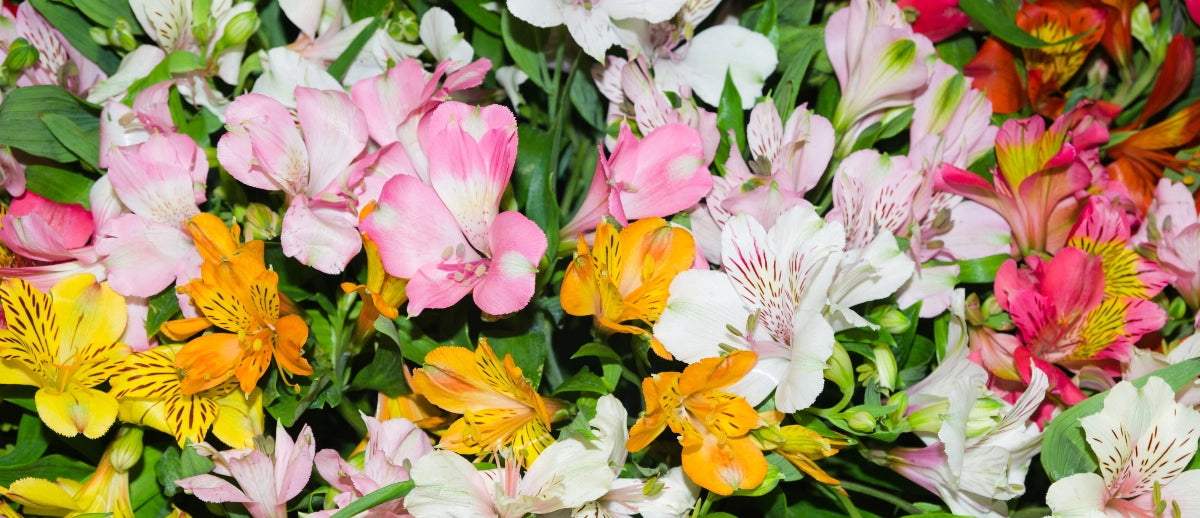Step One: Select the Right Seed Substrate
We recommend a soilless growing medium for starting your Alstroemeria seeds. Soil-based seedling mixes harbor fungi and bacteria that can wreak havoc during the long germination process. Each container should hold about 3" of the substrate, with enough room between the soil and rim to allow the seedlings to emerge. About 1/2" is fine.
Step Two: Planting Alstroemeria Seeds
Moisten the substrate (if you squeeze a handful, no water should drip out), and plant 3-4 seeds per container, no deeper than 1/4" below the surface. Wrap each pot in a layer of plastic wrap to retain moisture.
If you don't have a whole lot of room to babysit seeds in pots, you can mix a few seeds with damp peat moss in a small resealable baggie for the next steps.
Step Three: Heat and Cold Stratification
Place your seed pots or baggies in a consistently warm (70°F) room for three weeks. Next, stick them in a refrigerator at about 40°F for another three weeks. If your spouse or housemates haven't murdered you by this point, move your little project back to a well-lit area with 70°F temperatures—but out of direct sunlight—to trigger germination, which should occur in 10 to 14 days.
Before this final step, be sure to shake the substrate in your baggies and lay them flat so your seedlings are able to receive light.
Once your seedlings emerge, remove the plastic wrap. Baggie seedlings should be transplanted with a plastic toothpick, butter knife, or another delicate tool (we like the "spoons" in these cheap sculpting instruments) into the same type of containers as the rest of the "class."
Cover with another 1/2" to 1" of a loose substrate, and keep your little darlings moist as they continue to emerge and take hold.
Step Four: Transplanting Your Starts
Once your seedlings have developed at least one set of true leaves, you can harden them off outside for about a week before planting them in their "forever homes."
Remove the plant and all the substrate from the pot, being careful not to disturb the roots. If two or more seedlings have grown in the same pot, congratulate yourself and plant them all together; separating them will stress out their roots.
Plant your seedlings (other than the twinsies) 1' apart, and keep the soil evenly moist.
Your Peruvian lilies will spend their first season growing and developing their root system and should begin blooming in their second year.
Step Five: Celebrate with a Cold Adult Beverage
What more do we need to say...other than to suggest a nice mint garnish for that mojito or pickled asparagus spear for your Bloody Mary.
Direct Sowing: Throwing Caution to the Wind
It's not impossible to plant your Peruvians directly into the soil, though you'll have a much lower germination rate than if you use the steps as outlined above. Our recommendation is to plant them at the end of the summer for spring emergence. Be sure to thin your seedlings to the recommended spacing, and plant more seeds than you need.


